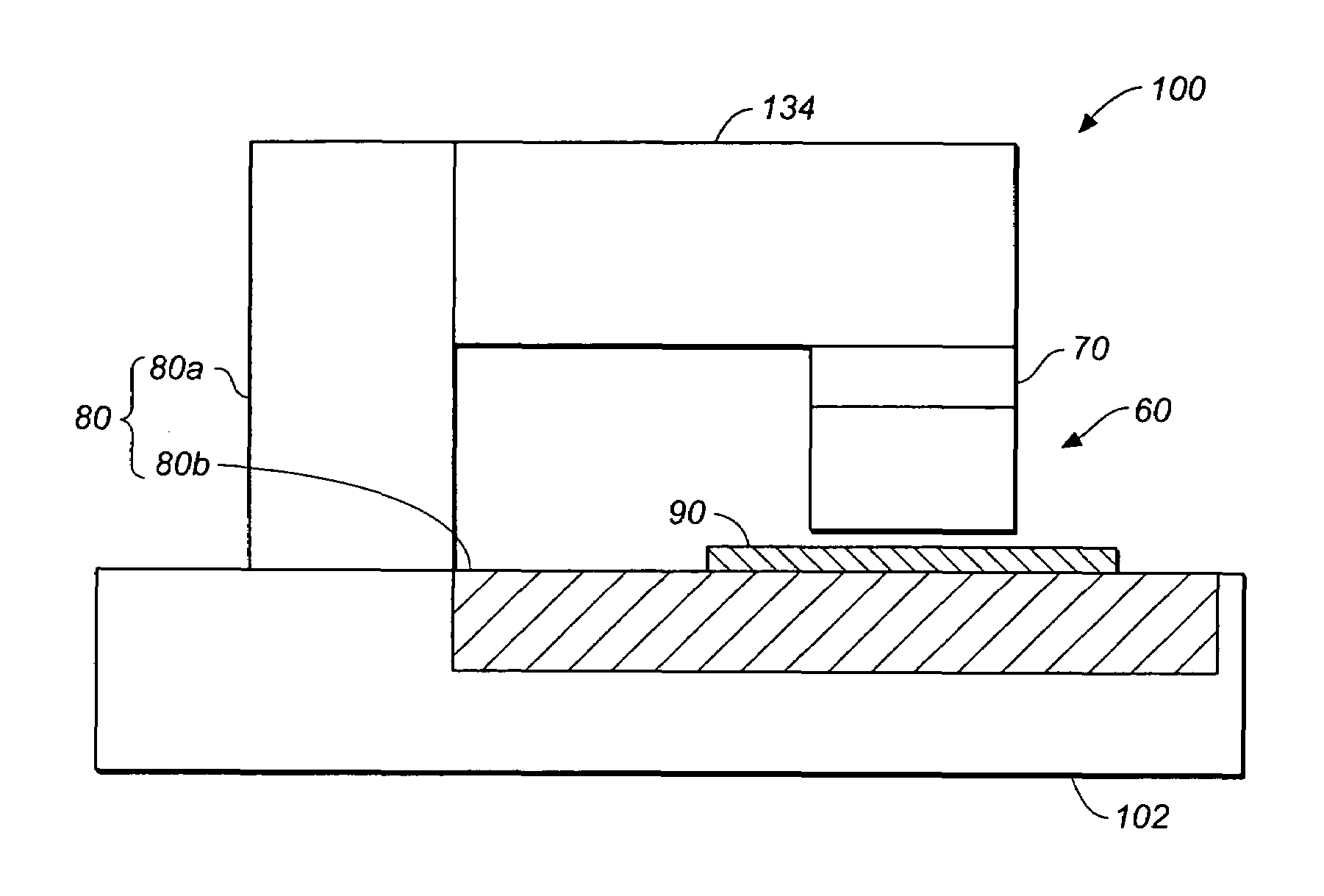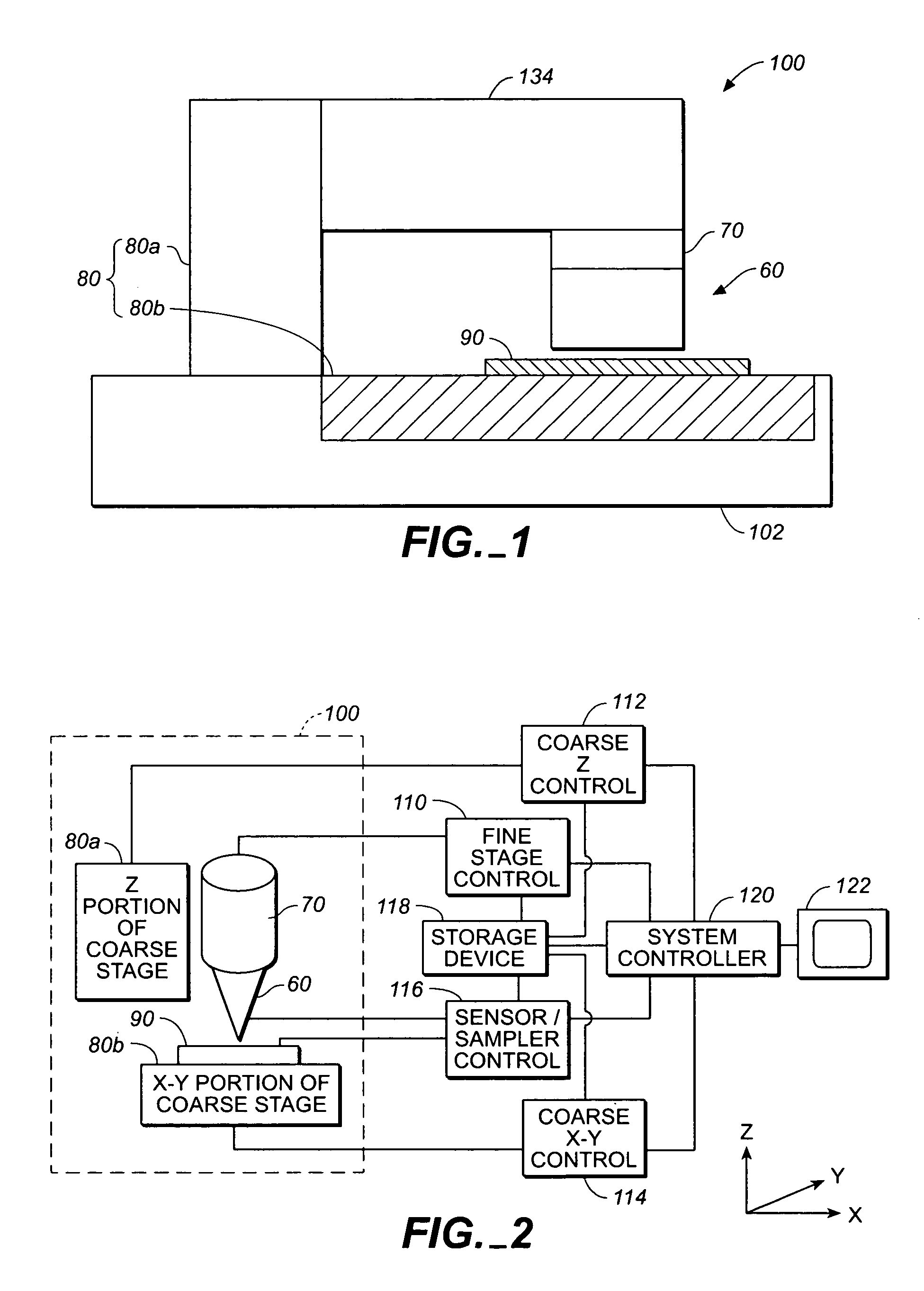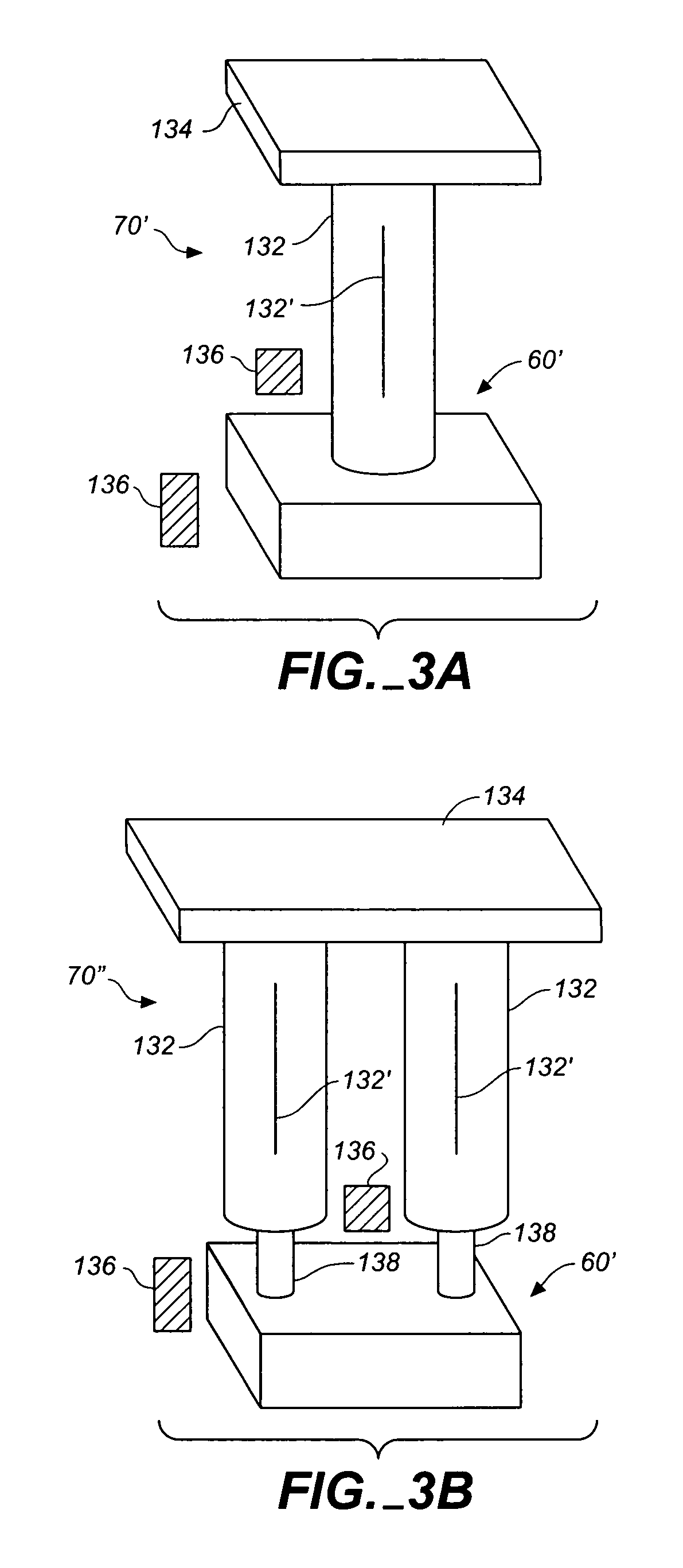Dual stage instrument for scanning a specimen
a specimen and instrument technology, applied in the direction of instruments, mechanical measuring arrangements, mechanical roughness/irregularity measurements, etc., can solve the problem of limited repeatability of x-y repositioning of stylus profilometers, limited lateral positioning resolution of conventional stylus profilometers, and lack of repeatable nanometer or sub-nanometer x-y positioning capability
- Summary
- Abstract
- Description
- Claims
- Application Information
AI Technical Summary
Problems solved by technology
Method used
Image
Examples
Embodiment Construction
[0062]FIG. 1 is a schematic view of a dual stage scanning instrument 100 to illustrate the preferred embodiment of the invention. Since the sensor assembly 60 may be much lighter than the sample or specimen 90, it may be desirable to support the sensor by means of the fine stage 70 and use the XY portion 80b of the coarse stage 80 to support the specimen or sample. The fine stage is in turn connected to and supported by the Z portion 80a of the coarse stage. Thus as shown in FIG. 1, the scanning instrument 100 includes a sensor assembly 60 connected to and supported by a fine stage 70 which in turn is connected to and supported by the Z portion 80a of the coarse stage 80. A sample 90 is supported by the XY portion 80b of the coarse stage 80. The Z portion 80a and X-Y portion 80b of coarse stage 80 are connected to and supported by base 102 as shown in FIG. 1.
[0063]Fine stage 70 preferably has a lateral resolution of about 1 to 50 Angstroms (0.1 to 5 nanometers), although a lateral r...
PUM
| Property | Measurement | Unit |
|---|---|---|
| radius | aaaaa | aaaaa |
| radius | aaaaa | aaaaa |
| length | aaaaa | aaaaa |
Abstract
Description
Claims
Application Information
 Login to View More
Login to View More - R&D
- Intellectual Property
- Life Sciences
- Materials
- Tech Scout
- Unparalleled Data Quality
- Higher Quality Content
- 60% Fewer Hallucinations
Browse by: Latest US Patents, China's latest patents, Technical Efficacy Thesaurus, Application Domain, Technology Topic, Popular Technical Reports.
© 2025 PatSnap. All rights reserved.Legal|Privacy policy|Modern Slavery Act Transparency Statement|Sitemap|About US| Contact US: help@patsnap.com



